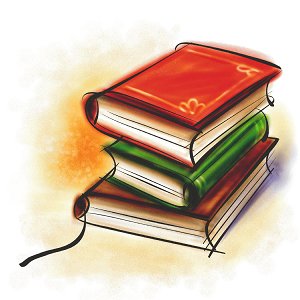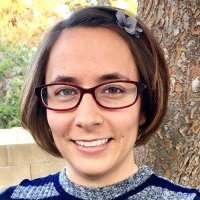
Hello, all. Welcome to "WoT If?", Dragonmount's weekly theory blog. For this edition, I want to look closer at the Dark Prophecies we've been given throughout the series. Despothera did a blog on this last year, but I'd like to look at them again; after all, we have different perspectives on many things.
Spoiler warning! This will include content from many books in the series, including Towers of Midnight, and speculation about A Memory of Light. Please read at your own risk.
Also, this WILL NOT contain spoilers from A Memory of Light's Prologue, Chapter 1, or Chapter 11. Please refrain from posting any spoilers from A Memory of Light in the comments section. The spoiler discussion board for A Memory of Light is found here.
The first Dark Prophecy we get is in The Great Hunt. According to an interview with Robert Jordan, it's written there by a Myrddraal. The first question I have is why would the Shadow even bother? Why would they want to give any information to the Light? The second question is who made the Myrddraal write it?
So, number one, why write it in the first place? We've seen that Trollocs like to write blasphemies to taunt their enemies, but Robert Jordan's quote says the Myrddraal was threatened into writing out the prophecy. He didn't do it to strike fear into the hearts of our main characters. What information in the prophecy does the Dark One, or at least one of the Forsaken, want the Light characters to know?
There's plenty of spoilers of the Dark One's plans here; a lot is actually given away. For example, it explains that Lanfear is seeking Rand; we could have figured this out, but now we have confirmation. It also tells us the true nature of Luc and Isam. Why would the Shadow reveal insight to their greatest assassin? That whole last stanza lets the Light characters know about the Seanchan army's invasion. How could that possibly help the Shadow? Let's hold onto that thought and see who ordered the Myrddraal to write this prophecy.
There's plenty of intrigue going on in Fal Dara. To the best of my understanding, it happened like this. Ingtar, at the Darkfriend social (The Great Hunt, Prologue), seems to have his strings pulled by Ba'alzamon (Ishamael, at the moment). So, logically, Ishamael is the one who wanted the Dark Prophecy written on the wall in the dungeon. It was Ishamael who wanted to reveal all this information to the Light characters—probably Rand, more specifically.
This might be reading too much into it, but there are several theories that say Moridin (Ishamael's latest identity) will turn back to the Light, or that he's been a double agent from the start. With his talk of theology and the nature of good and evil, his desire to see the Wheel broken, plus his reputation for being insane, it's understandable to think he might have ulterior motives when serving the Dark One. Could letting sensitive prophecies, such as this, slip into the hands of the Light characters imply that Ishamael is on their team, giving them aid?
Later, though, Moridin seems to have a change of heart. When speaking with Graendal about the Dark Prophecy, he says this:
Towers of Midnight
Chapter 5, "Writings"
"The Light must never know of these words. We know of their prophecies, but they will never know all of ours."
When characters are inconsistent, it points to deeper secrets.
The part about Lanfear is interesting:
The Great Hunt
Chapter 7, "Blood Calls Blood"
Daughter of the Night, she walks again.
The ancient war, she yet fights.
Her new lover she seeks, who shall serve her and die, yet serve still.
Who shall stand against her coming?
The Shining Walls shall kneel.
Blood feeds blood.
Blood calls blood.
Blood is, and blood was, and blood shall ever be.
Notice the line about her lover, "who shall serve her and die, yet serve still." Despite the scene in Towers of Midnight when Cyndane begs for Rand's help, I think this prophecy is showing her true intent. Some people believe Cyndane will be the Forsaken who returns to the Light, but I don't think so. In my personal opinion, there are further hints to this in the A Memory of Light Prologue, but I won't go into it here.
Now for the part about Isam and Luc:
Luc came to the Mountains of Dhoom.
Isam waited in the high passes.
The hunt is now begun. The Shadow's hounds now course, and kill.
One did live, and one did die, but both are.
The Time of Change has come.
Blood feeds blood.
Blood calls blood.
Blood is, and blood was, and blood shall ever be.
There's a few things to point out. Luc and Isam are merged; we know that. But why does the line, "The hunt is now begun…" come before, "One did live…"? It breaks up the topics. Most believe the first line refers to the Darkhounds hunting, but I'll offer a different opinion. Slayer thinks of himself as a hunter; he also serves the Dark One. Is it possible he's the Shadow's hound? Also, since it's plural, the other hound could be Fain. Then, if that line is also referring to Slayer, it stays on topic, not jumping around. That makes more sense, to me.
Another thing to note is the line, "The Time of Change has come." Since this is so ambiguous, I don't think there's much we can say for certain about it. However, I do want to point out that—to the best of my knowledge—the only other time we hear this phrase is from Bair:
Chapter 23, "Beyond the Stone"
"If he is the one," Bair said, "the Time of Change is upon us. Aes Sedai stand on Chaendaer, and Aan'allein with his shifting cloak. Can we hold to the old ways still? Knowing how much is to change?"
There has been some debate over whether one of the prominent Wise Ones is a Darkfriend. The two most often suspected are Bair or Sorilea. It seems a bit odd that Bair would use a random phrase we've only ever seen in Dark Prophecy.
Since we talked about the Dark Prophecy in Towers of Midnight last week, it got me thinking about the different ways it could be interpreted as well. First off, we can't be 100% certain that the prophecy printed in the Epilogue is the same one Moridin and Graendal talk about. So, maybe they have a different passage that says more firmly that Perrin will be killed by the Shadow, because I don't think the "Broken Wolf" refers to Perrin.
First, let's look at the second stanza of the prophecy:
Towers of Midnight
Epilogue
In that day, when the One-Eyed Fool travels the halls of mourning, and the First Among Vermin lifts his hand to bring freedom to Him who will Destroy, the last days of the Fallen Blacksmith’s pride shall come. Yea, and the Broken Wolf, the one whom Death has known, shall fall and be consumed by the Midnight Towers. And his destruction shall bring fear and sorrow to the hearts of men, and shall shake their very will itself.
Let's take that first line, but remove the dependent clauses: "In that day, the last days of the Fallen Blacksmith's pride shall come." It's easier to see the main point of the sentence this way. My first instinct was, like Despothera said, to think that the pride represents Perrin's wolf pack. They aren't called a pride, of course, I think it's still possible. Other words for pride are:
Arrogance (not something Perrin has)
Satisfaction or delight (perhaps in terms of Faile)
Self-respect (his confidence in himself has grown over the last book).
I can see Perrin having pride and satisfaction in Faile, or perhaps in their child. However, Faile getting captured again seems pretty unlikely. Likewise, I don't see him losing all his self-respect or confidence after having just gained it in the last book.
His army might count as a pride, but I still think it will wind up referring to his wolf pack.
Next, "when the One-Eyed Fool…." Mat has a reputation as the Fool throughout the series. Karede is flabbergasted to find out that "Tylin's Toy" is the one leading the army against him (Knife of Dreams, Chapter 36, "Under an Oak"). He's called "trickster" by the Aelfinn (The Shadow Rising, Chapter 15, "Into the Doorway"). Also, he lost his eye at the Tower of Ghenjei (Towers of Midnight, Chapter 54, "Light of the World"). It seems conclusive this is talking about Mat. But doesn't that seem too easy?
Despothera linked the "halls of mourning" to the Tower of Ghenjei, but I'd counter that with this: Mat lost his eye at the Tower, so he wouldn't be called a One-Eyed Fool yet. Ah, paradoxes. I think it much more likely that the halls of mourning will be either a) the burned city of Caemlyn after the Trolloc attack, or b) the city of Ebou Dar where they still might be mourning the death of the Empress.
Next, let's look at "First Among Vermin" and "Him who will Destroy." The first might be Rand. There is a parallel between Lews Therin being called "first among the Servants" by Elan Morin (The Eye of the World, Prologue), but Rand really doesn't consider himself the First of anything. Plus, I think it's more likely that "Him who will Destroy" is Rand. It's possible that Rand might be bound at some point during the Last Battle. Then, the First Among Vermin will free him, allowing Rand to "Destroy" the Dark One. Looking at it that way, the First Among Vermin could be Fain, as discussed last week, but it could be Galad. Their blood connection should play an important part in the Last Battle, since he is as much a part of the "Royal line of Andor" as Rand is (The Shadow Rising, Chapter 1, "Seeds of Shadow"). Even the Shadow would consider the Children of the Light to be vermin.
On to "the Broken Wolf…whom Death has known…." The Forsaken—if this is the passage they are looking at—take this to mean Perrin. Since Min did see the Broken Crown above him in one of her viewings, a Broken Wolf fits. However, there are many people with connections to wolves, and there are the real wolves too. My first pick would be Ituralde. He is called the Wolf (or Little Wolf) in the prologue of Crossroads of Twilight. He has been broken by his battle in Maradon, and also by the invasion of the Seanchan into his nation. I think Maradon would count as knowing Death, as well. He was left for dead by Rand, completely abandoned.
Another interesting theory is that the Broken Wolf is Hopper. We are led to believe that he died during the Tel'aran'rhiod battle in Tar Valon (Towers of Midnight, Chapter 38, "Wounds"). But it could be his soul was being reborn into the waking world.
The next bit says the Broken Wolf will fall to the Midnight Towers. Even Midnight Towers is an ambiguous term. The Towers of Midnight is the name for the Seanchan prison (The World of Robert Jordan's The Wheel of Time, Chapter 17, "Seanchan"). It's also referenced in Egwene's Dream, symbolizing the thirteen Forsaken (Towers of Midnight, Chapter 3, "The Amyrlin's Anger").
Ituralde could be killed by one of the Forsaken. The same is true for Hopper. However, if the Broken Wolf is Perrin, the Seanchan explanation seems more likely than the Shadow. Perrin did make a pact with the Seanchan; he could be consumed into their Empire.
"His destruction" refers to the Broken Wolf. I think Despothera had the right idea suggesting it's about the destruction he (whichever it is) causes, not necessarily his death. Again, I think this would point to Ituralde, since more people would be shaken by his destruction; most don't even know Perrin is alive.
Well, hopefully that didn't lead to only more questions. There were a few left to ponder, so let me know what you think. I wanted to get into Mashadar and other things a bit more, but I'm out of time for today. We'll save it for next week. Thanks for reading.












Recommended Comments
Join the conversation
You can post now and register later. If you have an account, sign in now to post with your account.
Note: Your post will require moderator approval before it will be visible.